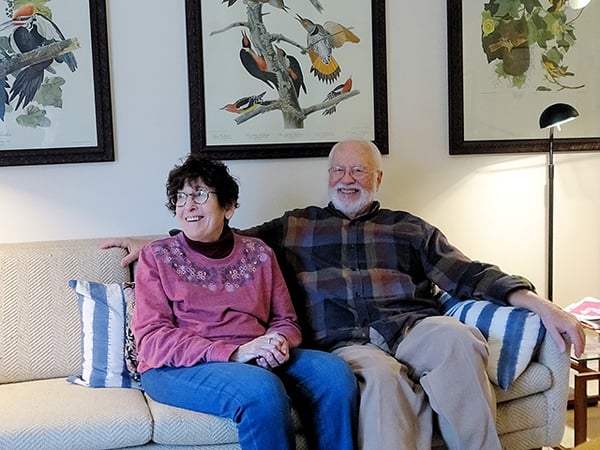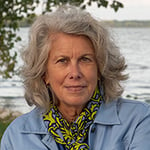Published: March 18, 2021
 As we grow older, our relationships with family and friends change. Our children and grandchildren grow up and often move away. Our daily interaction with co-workers comes to an end. And we may eventually lose partners and friends to illness or death.
As we grow older, our relationships with family and friends change. Our children and grandchildren grow up and often move away. Our daily interaction with co-workers comes to an end. And we may eventually lose partners and friends to illness or death.
If the fabric of our social connection begins to unravel, we may be looking for ways to weave the pieces back together.
One solution is to live in a community with other older active adults who are interested in making new friends, volunteering, learning new skills and honing old ones.
Studies support the idea that aging in place in a life plan or continuing care retirement community reduces social isolation.
According to Brad Breeding, president of myLifeSite:
“A recent study conducted in the U.K. looked at the impact that moving to a retirement community had on seniors’ health and longevity. Among the U.K. study’s findings: Eighty-seven percent of retirement community residents reported that they ‘never’ or ‘hardly ever’ felt lonely after making their move into the community.”
He cited another study by Mather LifeWays Institute on Aging, in conjunction with Northwestern University, that found “over two-thirds of the CCRC residents surveyed said that moving to a CCRC ‘somewhat or greatly improved’ their social wellness, a concept which encompasses a person’s sense of connectedness and belonging within their community.”
A Calendar Full of Activities and Opportunities
Some retirement communities have an activities director, but Kendal at Oberlin is a resident-led community. What does that mean?
In addition to the Kendal at Oberlin Residents Association (KORA), Kendal residents form and participate in committees – they currently have more than 90 - on topics of interest and concern from horticulture and art, to music and drama, to fitness and health, and of course a program committee.
Flip through the monthly Kendalight (also run by a committee) for a look at all the things going on at the community, even during a pandemic.
Along with more a variety of activities, living in a life plan community also makes it easier to find people to share meals, take walks, attend concerts and the like.
Retirement communities that are located in a college town also open up doors for learning and intergenerational engagement. Although those activities are on hiatus or virtual at Oberlin College and other higher education institutions because of COVID-19, older adults and college students will eventually be reconnected in classrooms and mentoring projects.
Ditto for Kendal’s Early Learning Center, where in the past residents have planned ice cream socials, tea parties and other “grandfriend” activities with the pre-schoolers.
Speaking of Volunteering
Volunteering is contagious at Kendal. Residents volunteer their time at the nonprofit community, and help organizations in the city of Oberlin, Lorain County and beyond.
“Volunteering is a big part of Kendal because we do not have an activities director or social director. The residents all do the work to make things happen,” says resident Anne Elder, who chairs the Volunteer Clearinghouse Committee.
Every year the committee counts up total number of volunteer hours. Annual totals have been as high as 60,000 hours, and last year even with a pandemic Kendal at Oberlin residents volunteered over 44,000 hours.
Simply Put….
Living in a community such as Kendal at Oberlin makes it easy to make friends.
Like many older adults, Larry and Betsy Mirel planned to “age in place” in their D.C. home, but after dealing with the aftermath of cleaning up a yard from a windstorm they decided to age in place in the Kendal community.
Larry graduated from Oberlin College (class of ’57) and played in the college’s orchestra. At Kendal he quickly hooked up with other resident musicians and Betsy, a former teacher, turned her attention to the Early Learning Center.
“People here are very open and friendly. They are more interesting as you get to know them,” Larry says. Adds Betsy, “I really like the people at Kendal. I feel socially much richer and happier here.”
Resident Tina Graf says she agrees with what Liz Burgess, former chair of Kendal’s Board of Directors, told her – “living at Kendal is like being in grad school.”
For many CCRC residents, college was the last place they lived communally, and many lifelong friendships were forged during those years.
Writes Sarah Mouser in an article for Forbes entitled “Is An Independent Living Retirement Community Right for Me?”:
“Residents of CCRCs often say that one of the best things about the community in which they live is the friendships they have formed with other residents. These relationships can be particularly helpful as part of your support network if health care needs arise in the future.”
5 Ways of Living Life with Purpose
Studies show that people who feel they live a purposeful life tend to be healthier in body, mind and spirit.
 In the past, Molly Kavanaugh frequently wrote about Kendal at Oberlin for the Cleveland Plain Dealer, where she was a reporter for 16 years. Now we are happy to have her writing for the Kendal at Oberlin Community.
In the past, Molly Kavanaugh frequently wrote about Kendal at Oberlin for the Cleveland Plain Dealer, where she was a reporter for 16 years. Now we are happy to have her writing for the Kendal at Oberlin Community.
About Kendal at Oberlin: Kendal is a nonprofit life plan community serving older adults in northeast Ohio. Located about one mile from Oberlin College and Conservatory, and about a 40 minute drive from downtown Cleveland, Kendal offers a vibrant resident-led lifestyle with access to music, art and lifelong learning.




